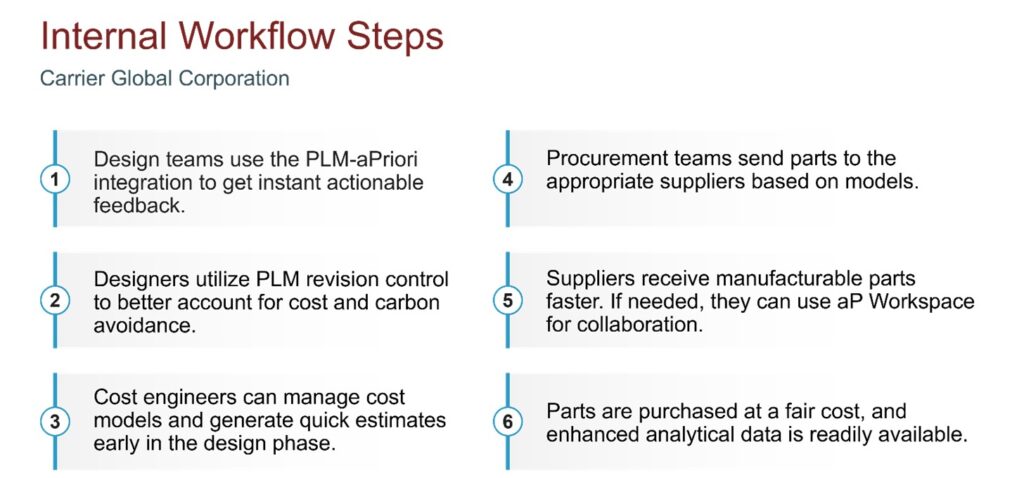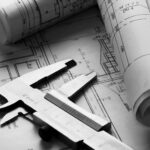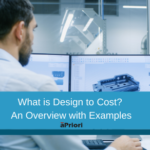
Key Takeaways:
- Manufacturers are feeling pressure to cut costs amid inflation, supply chain issues, and more
- Think strategically about where to trim expenses and use digitalization to offset cost reductions
The Full Article:
Cost reduction is a perennial problem for most businesses. Continuing price hikes, calls to do more with less, and pressure to ensure profitability compound the issue. How do you cut costs without sacrificing value? Where should manufacturers make cost reductions and where should they avoid them?
The tried-and-true methods of the past (reducing staff, cutting corners on materials, etc.) no longer work in today’s highly competitive and ever-changing landscape. Although it seems daunting, it is possible to reduce costs, improve profitability, and remain competitive without sacrificing product quality today or long-term business goals.
Here is where (and how) to make targeted cost reductions and areas to avoid:
Do Cut Costs In…
- Design stage: The design stage is the seminal point for product development and has the greatest impact on cost, quality, manufacturability, and time to market. Did you know that as much as 25-45% of all costs in engineered products add no value to the product or customer, according to the management consulting firm, Oliver Wyman? Solutions like aPriori’s allow design engineers to collaborate with all product development teams. They will gain insights (design issues, cost outliers, etc.) early in the process, reducing engineering change orders (ECOs), and accelerating time to market. The result is a cost-efficient product without compromising manufacturability or quality.
- Supply chain: The supply chain plays a crucial role in product development, from raw materials and parts to logistics and inventory management. Often, sourcing and suppliers are not looped in until the product has been designed. As a result, production could be held up due to a lack of materials, supplier costs significantly higher than the industry average, or significant shipping delays due to production location. As with design, supply chain management is fertile ground for cost reductions. KPMG noted in a recent article that 71% of global companies cited raw material costs as their main supply chain threat in 2023. Tools such as aPriori’s Regional Data Libraries and its product cost vs. material rates calculator allow sourcing teams to determine the feasibility and availability of supplies and prices while still in the design phase. There are other benefits including improved supplier negotiations and decreased supply chain bottlenecks.
- Quoting/RFQs: The fastest way to drive up costs (overpaying on parts) and create product development cycle bottlenecks is using outdated, inefficient spreadsheets when costing. By utilizing digital factories, Carrier was able to obtain accurate cost models on complex products in a matter of minutes. Initially, Carrier identified $200,000 annual savings for a set of screw compressor rotors. Many component cost models later, Carrier has achieved more than $20 million in value.
- Inefficient processes/workflows: Automation is essential for eliminating departmental silos and workflow bottlenecks. Digital applications can support this effort, improving process efficiencies, enabling faster scaling, reducing errors, and minimizing production delays. Greater collaboration is fostered, breaking down silos that impede workflow. Design, costing, sourcing, and production can work synergistically to ensure all “t”s are crossed and “i”s dotted. Issues can be identified and remediated quickly rather than going back to the proverbial drawing board. Finally, automation can alleviate rudimentary, repetitive, and/or dangerous tasks so employees can focus on more technical, high-priority ones. Learn how aP Workspace is providing collaboration and task management specifically for product development teams.
- Material waste and excess energy consumption: Implementing more energy-efficient technologies, leveraging manufacturing simulation tools, and moving sustainability initiatives forward can reduce material waste and energy consumption. Relying on manufacturing insights to provide material waste guidance and support sustainable processes can positively impact cost reduction. Design for sustainability can dramatically reduce waste and the carbon footprint, improving efficiencies and saving a substantial amount.

Don’t Cut Costs In …
- Product Quality: Minimizing product performance to save cost can cause quality issues that damage consumer trust and brand reputation. Solutions like aPriori can identify potential production issues, recommending more cost-effective materials, processes, etc. without compromising safety or quality.
- Workplace and Product Safety and Compliance: Your workforce and products are the bread and butter of your operations. Automation streamlines processes, reduces human error, and assumes more risky tasks that could lead to potential accidents, non-compliance fines, possible lawsuits, and a hit to your brand and/or reputation.
- Employee education, training, and development: According to the Society for Human Resource Management (SHRM), employers estimate total new hire costs can be as much as three to four times the position’s salary. If the average U.S. manufacturing worker makes about $31,000 per salary (ZipRecruiter), then employers can expect to pay anywhere from $93,000 to $124,000. As it becomes increasingly difficult to attract and retain employees, it’s essential to invest in employee education, training, and development. It will increase productivity, ensure a space in a competitive market, and keep employees engaged and dedicated to the organization. Digitalization encourages upskilling for employees. As a result, labor shortages can be compensated cost-effectively and not impede production.
- Customer Service: Forbes reports that acquiring a new customer can cost five to seven times more than retaining existing clients. Customer trust is everything when it comes to your brand. Organizations must measure and enhance customer satisfaction. Providing a high-value product at a fair price point with exceptional service goes a long way to fostering strong customer relations and a favorable reputation.
- Innovation/New Product Development: Those who continue to invest in innovations and support research and development for future products tend to be more competitive and achieve long-term growth. aPriori’s manufacturing insights encourage a “think outside the box”, “do more with less” methodology.
Harness aPriori to Meet Profitability, Manufacturability AND Sustainability Goals
Cost cutting is possible without compromising your most valuable assets – your people and products. However, it requires a cost-reduction strategy and digital tools to accomplish it.
Ultimately, the goal shouldn’t just be cost reduction but improvement across the organization. Optimization solutions like aPriori can streamline processes, eliminate waste, and mitigate supply chain issues. Advanced technologies also better utilize, attract, and retain employees, ensure customer satisfaction, meet sustainability initiatives, and foster long-term growth.
What Can Should Cost Analysis Do For You?
Improve cost targets, get fact-based supplier negotiations, better design, and faster time to market.





